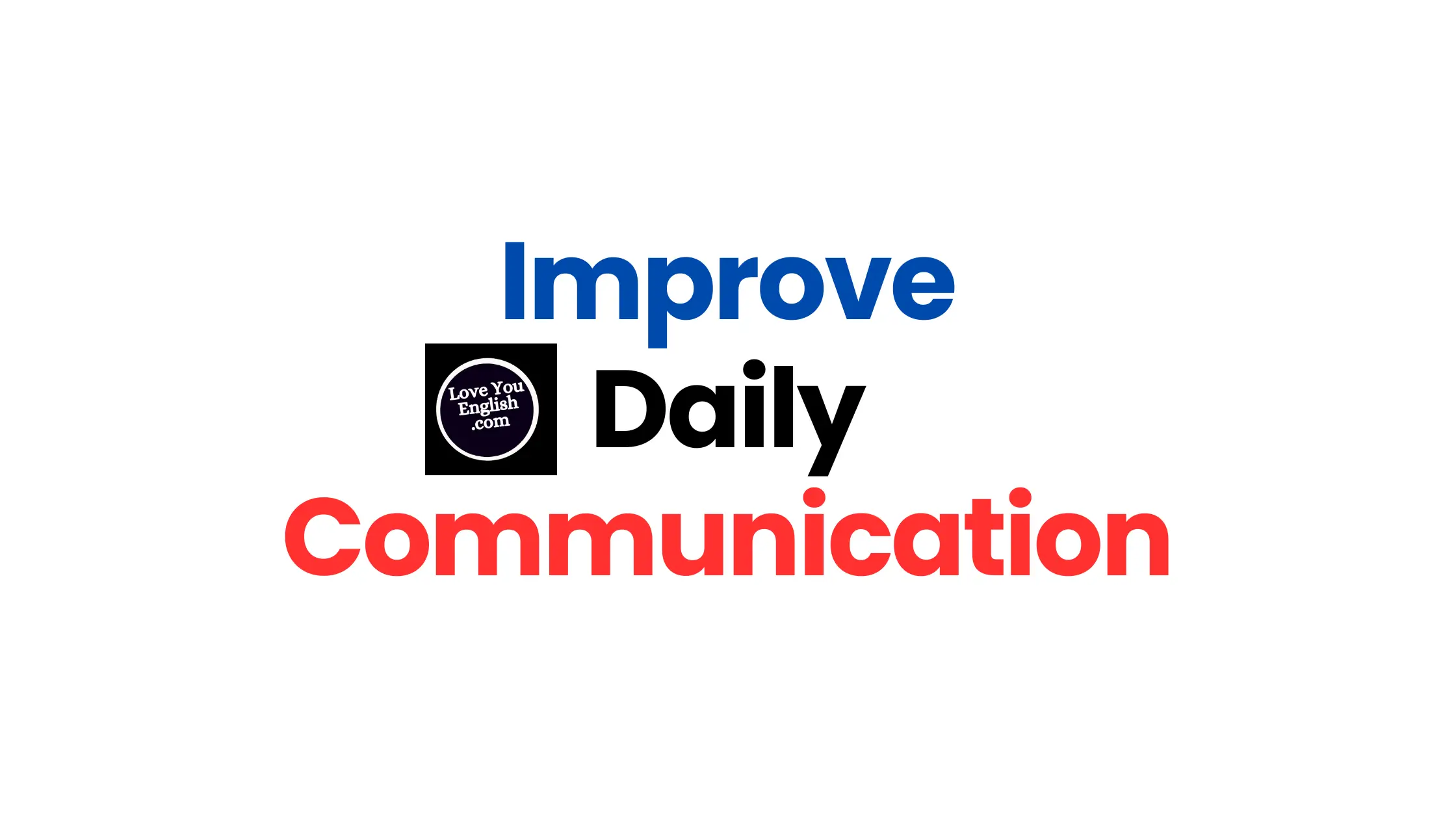Effective Strategies to Improve Your Communication Skills
Effective Strategies to Improve Your Communication Skills
In today’s world, it’s super important to be able to talk to people who speak different languages.
Whether you’re on vacation, working for a big company, or just hanging out with people from different places, being able to communicate in different languages is really useful.
I will give you some tips on how to do it!
Learn Basic Phrases in the Target Language
One of the most effective ways to break the ice and show respect for another culture is to learn some basic phrases in their language.
Even if you’re not fluent, making an effort to speak a few words can go a long way in building rapport and goodwill.
Here are some key phrases to start with:
- Hello/Goodbye
- Please/Thank you
- Yes/No
- Excuse me
- How are you?
- My name is…
- Do you speak English?
- I don’t understand
Learning these simple phrases demonstrates your willingness to engage with the local culture and can often lead to more positive interactions.
Use Non-Verbal Communication
When words fail, body language becomes even more crucial. Non-verbal cues can convey a wealth of information and emotions.
Here are some tips for effective non-verbal communication:
- Maintain appropriate eye contact (cultural norms may vary)
- Use facial expressions to convey emotions
- Employ hand gestures to illustrate your points
- Pay attention to your posture and body positioning
- Use head nods or shakes to indicate agreement or disagreement
- Respect personal space (again, cultural norms may differ)
Remember that non-verbal cues can vary across cultures, so it’s essential to research and be aware of cultural differences in body language.
Speak Slowly and Clearly
When communicating with someone who doesn’t share your native language, it’s crucial to speak slowly and enunciate clearly.
This doesn’t mean shouting or exaggerating your speech, but rather:
- Pace yourself and allow time for processing
- Pronounce words distinctly
- Use pauses between sentences
- Avoid complex vocabulary or idioms
- Break down long sentences into shorter, simpler ones
By speaking more deliberately, you give your listener a better chance of understanding and responding appropriately.
Read more interesting topics:
- How to Ask Questions in English
- 30 Awesome American Slang Words You Should Know
- Why Learn English? 10 Great Reasons to Start Today
- Learning English Through the Real World
- Become an English Grammar Guru
Use Visual Aids
A picture is worth a thousand words, especially when crossing language barriers.
Visual aids can help clarify concepts and facilitate understanding.
Consider using:
- Maps
- Drawings or sketches
- Photographs
- Diagrams
- Objects or props
- Digital translation apps with visual components
Visual aids can provide context and reinforce your verbal communication, making it easier for both parties to comprehend the message.
Learn About Cultural Differences
Language barriers often go hand in hand with cultural differences.
To communicate effectively, it’s essential to understand and respect cultural norms, values, and customs.
This includes:
- Researching appropriate greetings and gestures
- Understanding taboos and sensitive topics
- Learning about local etiquette and social norms
- Being aware of differing communication styles (e.g., direct vs. indirect)
- Recognizing cultural concepts of time and punctuality
By demonstrating cultural sensitivity, you create a more comfortable environment for communication and reduce the likelihood of misunderstandings.
Use Simple Language and Avoid Idioms
When communicating across language barriers, it’s best to use simple, straightforward language.
Avoid:
- Complex grammar structures
- Colloquialisms and slang
- Idioms and phrasal verbs
- Technical jargon
- Sarcasm or subtle humor
Instead, opt for:
- Basic vocabulary
- Short, clear sentences
- Concrete examples
- Universal concepts
By simplifying your language, you increase the chances of being understood and facilitate more effective communication.
Utilize Translation Tools and Apps
In the digital age, we have access to a wide array of translation tools and apps that can assist in breaking down language barriers.
Some popular options include:
- Google Translate
- iTranslate
- Microsoft Translator
- DeepL
- Duolingo
While these tools aren’t perfect, they can be invaluable for quick translations, especially for written text or basic phrases.
However, be cautious when relying on machine translation for complex or sensitive communications.
Practice Active Listening
Active listening is crucial in any communication scenario but becomes even more critical when dealing with language barriers.
To practice active listening:
- Give your full attention to the speaker
- Show that you’re engaged through non-verbal cues
- Avoid interrupting
- Ask clarifying questions
- Paraphrase or summarize what you’ve heard to confirm understanding
By actively listening, you demonstrate respect and increase the likelihood of successful communication.
Be Patient and Empathetic
Communicating across language barriers can be frustrating for all parties involved.
It’s essential to remain patient and empathetic throughout the process.
Remember:
- Language learning is challenging
- Mistakes are a natural part of the process
- Everyone has different language abilities and comfort levels
- Anxiety can impact language performance
By approaching cross-language communication with patience and understanding, you create a supportive environment that encourages continued effort and improvement.
Learn About Language Structure and Cognates
Understanding the basic structure of the language you’re trying to communicate in can be helpful.
While you don’t need to become a linguistics expert, knowing about:
- Word order (e.g., subject-verb-object vs. subject-object-verb)
- Verb tenses
- Gender and number agreement
- Formal vs. informal speech
can provide valuable context for communication.
Additionally, learning about cognates (words that have similar spelling and meaning across languages) can help you recognize familiar words and expand your vocabulary more quickly.
Use Repetition and Paraphrasing
When communicating across language barriers, it’s often helpful to repeat key points or paraphrase your message in different ways.
This technique:
- Reinforces important information
- Provides multiple opportunities for understanding
- Allows for clarification of misunderstandings
- Demonstrates your commitment to effective communication
Be sure to vary your word choice and sentence structure when paraphrasing to increase the chances of being understood.
Encourage Two-Way Communication
Effective cross-language communication should be a two-way street. Encourage your conversation partner to:
- Ask questions if they don’t understand
- Share their thoughts and opinions
- Correct your pronunciation or usage if necessary
- Teach you words or phrases in their language
By fostering a collaborative approach to communication, you create a more engaging and productive exchange.
Use Humor Carefully
Humor can be a great way to build rapport and lighten the mood, but it can also be easily misunderstood across language and cultural barriers.
When using humor:
- Stick to universal themes
- Avoid sarcasm or complex wordplay
- Be prepared to explain the joke if necessary
- Be sensitive to cultural differences in humor
Remember that what’s funny in one culture may be offensive or confusing in another.
Practice Regular Language Exchange
One of the best ways to improve your cross-language communication skills is through regular practice.
Consider:
- Joining language exchange groups or apps
- Participating in conversation clubs
- Finding a language partner for tandem learning
- Attending multicultural events in your community
Regular practice will help you become more comfortable with cross-language communication and improve your skills over time.
Learn About Paralanguage
Paralanguage refers to the non-lexical components of communication, such as:
- Tone of voice
- Volume
- Pitch
- Speed of speech
- Pauses and silences
Understanding and using paralanguage effectively can greatly enhance your ability to convey meaning and emotion across language barriers.
Be Aware of False Friends
False friends are words in different languages that look or sound similar but have different meanings.
For example, the English word “embarrassed” and the Spanish word “embarazada” (which means pregnant) are false friends.
Being aware of common false friends can help you avoid potentially awkward or confusing situations.
Use Mnemonics and Association Techniques
When learning new vocabulary or phrases, use mnemonic devices and association techniques to help remember them.
For example:
- Create a story or mental image that links the word to its meaning
- Use rhymes or word associations
- Break down words into familiar components
These techniques can help you recall important words and phrases more easily during conversations.
Embrace Technology for Real-Time Translation
In addition to translation apps, there are now devices and earbuds designed for real-time translation.
While not perfect, these technologies are improving rapidly and can be useful tools for breaking down language barriers in certain situations.
Focus on Shared Interests and Experiences
When struggling to communicate across language barriers, focus on shared interests or experiences.
This can help create common ground and motivation for continued communication.
Topics like:
- Food and cuisine
- Music and art
- Sports
- Travel experiences
- Family and relationships
can often transcend language barriers and foster meaningful connections.
Continuously Educate Yourself
Breaking down language barriers is an ongoing process that requires continuous learning and improvement.
Stay committed to your language learning journey by:
- Setting realistic goals
- Tracking your progress
- Seeking feedback from native speakers
- Exploring new learning resources and methods
- Staying motivated through small successes
Remember that every interaction is an opportunity to learn and grow in your cross-language communication skills.
Final thoughts:
Overcoming language barriers can be tough, but it’s totally worth it!
By using these tips and staying positive and patient, you can get better at talking to people from different cultures.
Remember, it’s not just about words – it’s about understanding, respect, and making real connections with others.
As the world gets more connected, being able to communicate across languages is super important.
Whether you’re traveling, working globally, or just hanging out with diverse groups, these strategies will help you communicate better.
See language challenges as a chance to grow, learn about other cultures, and make the world a more united place.
Keep practicing, being patient, and never giving up – you’ll soon be breaking down language barriers and discovering a whole new world of connections and experiences!







